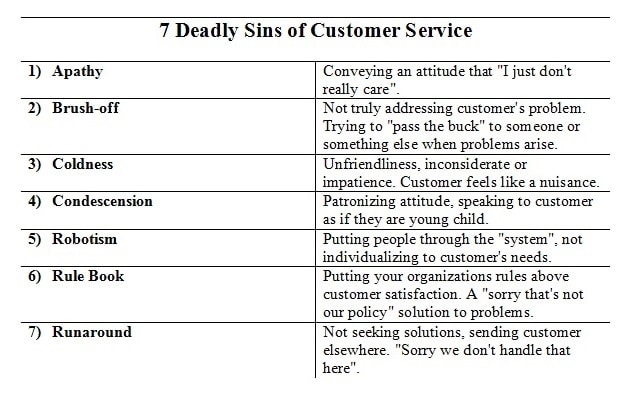In audiology, we can get pretty hung up on technology.
This is understandable, since so much of our professional lives revolve around electronics: from audiometers to FM transmitters, to hearing aids (and everything else inbetween). When it comes to creating a great experience for our patients, however, many of us lack formal training.
I believe this quote from Steve Jobs sums it up best:
You’ve got to start with the customer experience and work back toward the technology- not the other way around
Now substitute the word customer with the word patient and you can see how this quote is particularly relevant to us in audiology today.
The Patient Experience
While retailers have long understood the concept of providing good customer service, it’s still a relatively recent development in healthcare. Unlike days in the past, people today are more likely to “shop” for healthcare, in a way similar to any other product or service. Therefore, the importance of the patient experience has been gaining considerable attention in recent years.
At our clinic, for instance, we take pride in trying to create a great patient experience. Living in a small community, we realize the patients we serve on a daily basis are our friends and neighbors. We invest a tremendous amount of our time and resources training (and re-training) every member of our staff to ensure they are helping foster a great experience for our new and long-term patients. However, it’s always an ongoing process.
You might be the greatest clinician in the entire world, but that person may never find out if they decide to go elsewhere due to a bad experience with your office.

Source: www.caretransitions.com
Think about it: If you had a patient that needed ENT referral, with 3 equally skilled and competent specialists in your area, who would you send them to? It wouldn’t be a big stretch to guess you’d send them to the clinic where they’d feel the most comfortable and well taken care of (in other words, the place where they would have the best experience).
Something as simple as smiling when answering a phone call can mean the difference between whether a person decides to schedule an appointment or goes elsewhere.
In the age of social media in which we find ourselves today, it’s easy to see just how many lives a single person can touch. If an individual decides to go to another clinic, you could potentially be losing a lifetime patient and maybe even their friends or family members. That single person could theoretically bring dozens of patients into your doors over the years through word-of-mouth referrals.
Who would intentionally choose to send their patient (or their friend) to a sterile office with a cold receptionist and a doctor with poor bedside manner? Nobody!
Without sounding overly dramatic, a single person’s (positive or negative) experience can mean the difference between whether your clinic is in the red or in the black at the end of the year.
Good Customer Service Is Good Patient Service
You could very easily see how each one of the “Deadly Sins” of customer service, in the table below, could apply to routine clinical situations or nearly any interaction with a patient.
Are you or any of your staff committing one (or more) of these Deadly Sins?

**Table adapted from Master Retailing Blog
Hopping On the Bandwagon?
I have to admit, working clinically has given me a unique perspective when I go into other doctor’s offices for appointments. Becoming the patient is an interesting change of pace and allows me to see how other clinics are operating. Some are pleasant and I go in and out feeling like I’ve been taken care of and that the staff will help me if I have any questions or problems. Some offices, however, are the exact opposite.
While I’m not suggesting that clinical care should be compromised for the sake of making people feel comfortable in the office, what I am saying is that it’s worth your consideration to make the clinical experience as positive as possible for the patients you are serving. Just think about the litany of emotions that people have swirling in their minds prior to their first hearing test, vestibular evaluation or tinnitus examination. If they start out their appointment already having had a negative experience with your office, a staff member, a parking situation, etc., then they may not be fully engaged in the appointment with you. If that patient is not fully engaged, they are much less likely to accept your recommendations, take your advise, or even remember half of what you told them during the appointment.

Image source: www.tedgoff.com
The quality of the patient experience is being taken so seriously today that even major medical centers, such as the Mayo Clinic, are working to redesign their clinical spaces and exam rooms.
It’s easy to neglect the little things. Yet, these are often the very same things that separate an average company from a great company.
Not surprisingly, I’ve come to the conclusion that nearly all of the medical or dental appointments in which I’ve had a poor experience in the last few years was due in large part to violations of the 7 Deadly Sins of customer service (as seen in the table above).
Is It Time for a Patient Experience Audit?
Positive or negative patient feedback is an important step in finding out your strengths and weaknesses. Often, we can learn more from those who complain about a poor experience than we can from dozens of positive comments.
You might consider taking a few minutes this week to get out of the daily grind and think about what type of experience someone might have when they walk through the door, call your office, or surf your website for very first time. Will they come away with a positive or negative impression? Why?
Remember, as the old adage goes: You only get one chance to make a great first impression.
_
Featured image courtesy Beryl Health








Kevin,
Timely and important message. I believe so strongly in this topic that I wrote a book about it….Quality in Audiology: Design and Implementation of the Patient Experience.
Brian
Thanks Brian,
This is an area that has been overlooked for many years by the healthcare field in general and audiology is no exception; although its importance is increasingly being noticed. I’m sure your book would serve as a great tool for any audiology clinic seeking to be proactive in this area–thank you for sharing!